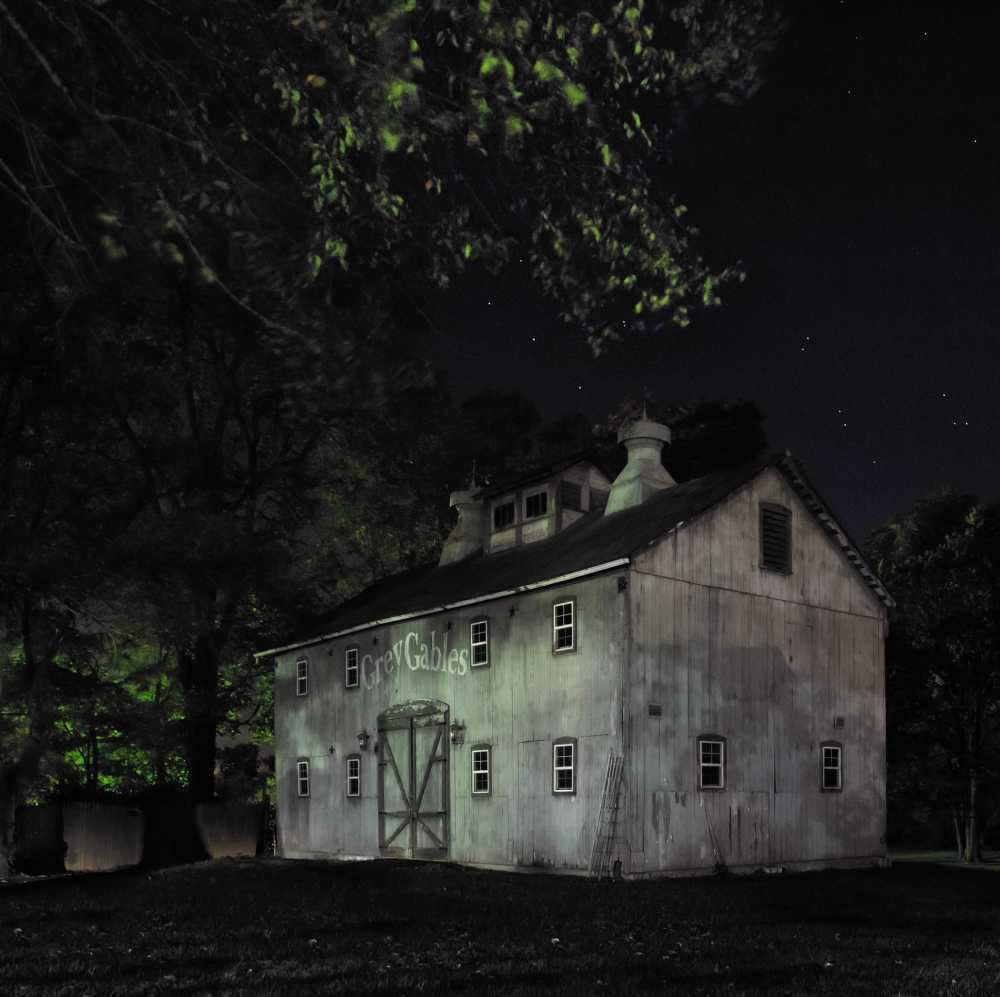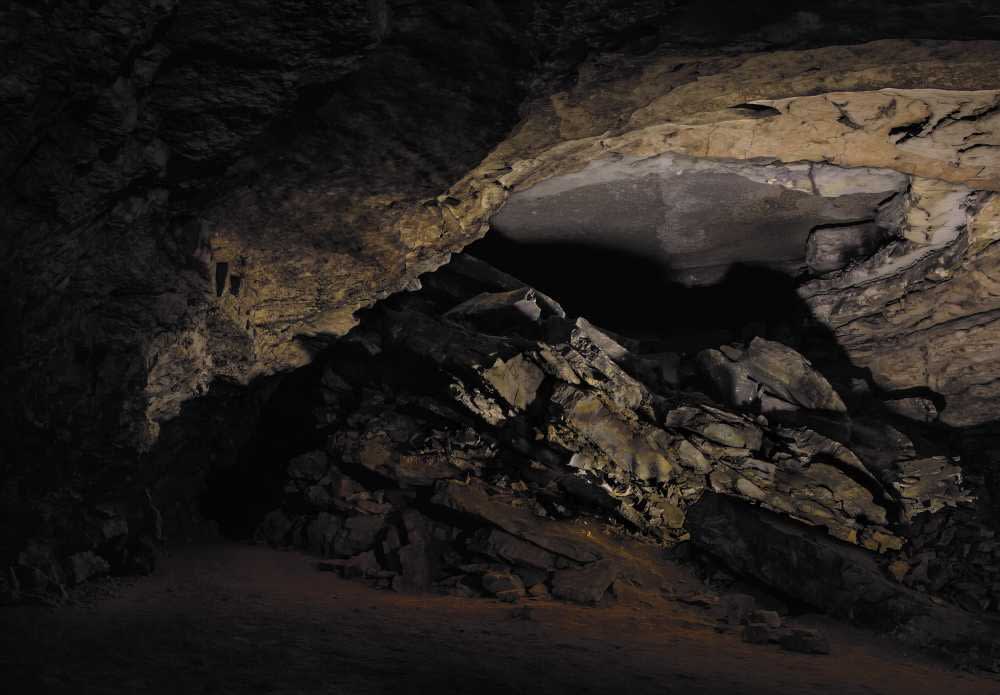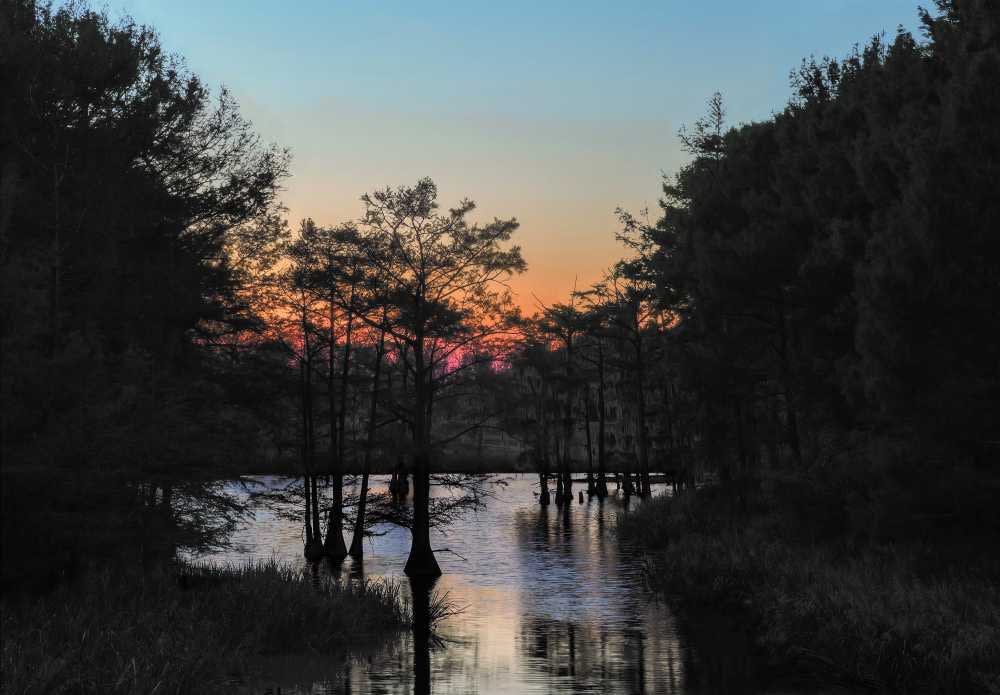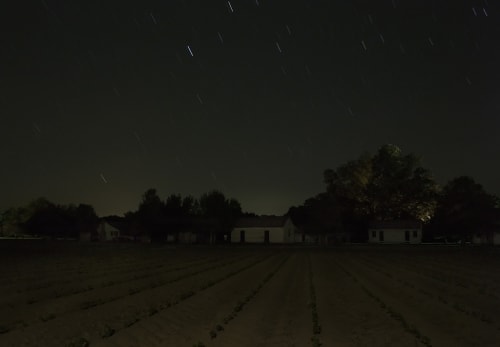Much of our nation’s first civil rights movement took place at night, as those seeking freedom along the Underground Railroad navigated uncertain paths, often by moonlight. An exhibit at the Canton Museum of Art takes visitors on that journey.
The history of the Underground Railroad has often been told from the perspective of station masters and conductors, but in “From Darkness to Light: Photographs along the Underground Railroad,” Dallas-based photographer Jeanine Michna-Bales captures the story through the eyes of an escaping slave.

“Liberty to the Fugitive Captive.” Waiting for the All Clear to Head to the Captain John Lowry Station, Lodi Plains Cemetery, Nutting’s Corner, Michigan, 2014/ Jeanine Michna-Bales
“In looking at the images, you are standing where that person stood. You can sense the fear of the unknown in these photos along with the fear of being detected, so it is really powerful,” said Canton Museum of Art Curator of Exhibits Christy Davis.
While taking pictures during the day would have made for clearer images, Michna-Bales chose to shoot mostly at night for a reason.
“She's trying to give you the perspective of what the freedom seekers experienced. They had to travel at night, since it was the safest time. It shows you what they were seeing. There wasn't light pollution from the cities or any of those things, so these are really dark images because that's how it would have looked, “ Davis said.
Following a decade of research, Michna-Bales spent three and a half year photographing what an Underground Railroad trip would be like in the 1840s starting in Louisiana traveling through Tennessee and Kentucky northward to Canada. Trying to find the path wasn’t easy because of the scarcity of written records.
“There was such a risk in documenting that information because if it was found, you risk not only yourself but also the people that you were aiding,” Davis said.

"Look for the Grey Barn Out Back." Joshua Eliason Jr. barnyards and farmhouse, with a tunnel leading underneath the road to another station, Centerville, Indiana, 2013/ Jeanine Michna-Bales
Michna-Bales photographed station houses documented as part of the Underground Railroad and others that could have been during that period. She made a point of taking the photos 20 miles apart because that was the distance a freedom seeker would have travelled each night on the journey toward Canada.
Given that many of these photos are dark, Davis advises visitors to take their time as they move through the exhibit.
“Go slowly and your eyes will adjust to the images. When you first look at it, it is very dark, but the longer you really gaze into the photograph, the more you can make out of the image,” Davis said.

"Hidden Passage." Mammoth Cave, Barren County, Kentucky, 2014/ Jeanine Michna-Bales
The photos capture the solitary nature of the journey.
“Most of these freedom seekers, the slaves, weren't getting that much aid along the way, especially in the Deep South. There are very few accounts of slaves from the Deep South making it to Canada, not nearly as many as from the Kentucky border. So when they were standing in these places that you see in the photographs, they were by themselves. There were station masters and station houses, but they were few and far between. It was really was a solo trip a lot of the times,” Davis said.

"Wading Prior to Blackness." Grant Parish, Louisiana, 2014 /Jeanine Michna-Bales
One of the most haunting photos in “From Darkness to Light,” is “Decision to Leave.”

"Decision to Leave." Magnolia Plantation on the Cane River, Louisiana, 2013/ Jeanine Michna--Bales
“That is actually a picture of slave quarters at the Magnolia Plantation in Louisiana that still stands as the National Parks Service site. Often slaves would consider leaving by maybe going to the next town over for a day or two but then come back. What you see in that image is really that last glance over your shoulder back to what they've known as their home before they decide to leave to try for a better life, “Davis said.
The photos in the exhibit become lighter with the promise of freedom drawing nearer.

"Within Reach." Crossing the St. Clair River to Canada just south of Port Huron, Michigan, 2014/ Jeanine Michna-Bales
“The shots where you see sunrise, you're seeing Canada across the water. You're not on Canadian soil quite yet. It's at least within reach,” Davis said.


